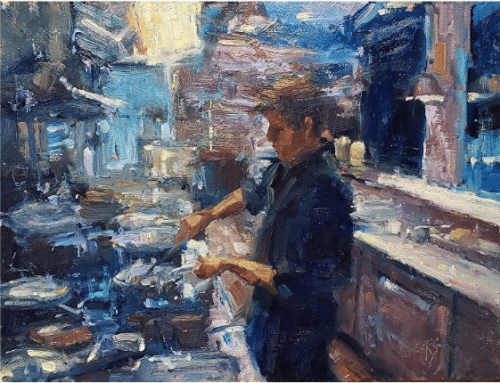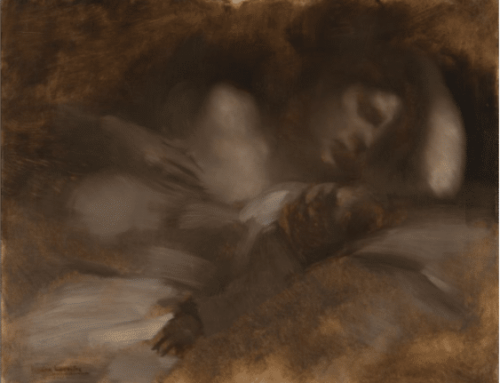Painting is often a solitary pleasure, though the popularity of plein air events proves it doesn’t have to be. And yet, there’s a rich intimacy when one solitude joins with another in collaboration on a shared project, even when the collaborators are continents apart.
The Hockaday Museum of Art is presenting an intriguing exhibition titled Between Artists: Life in Paintings and Prose. It highlights a collaboration — four years in the making — between the painter Tabby Ivy of Bigfork, Montana, and Damon Falke, a U.S.-born writer, poet, and playwright who lives in northern Norway. On view are more than 30 new works painted by Ivy with a range of written word, sound, and video components that highlight, among other things, what it means to live with art.
The pair’s artistic journey began with a Facebook friend request in 2018, when Falke noticed Ivy’s paintings on a gallery’s Facebook page. Their long-distance “conversation” began then, and they finally met in person in Spokane in 2019 at the premiere of Falke’s play The Scent of a Thousand Rains. Not long afterward, the idea of a collaboration began to develop.
Ivy notes, “In a strange way, the distance in miles, the growing challenge of the pandemic, as well as the time difference between Norway and Montana, allowed for a kind of intimacy in our collaboration. The disconnect provided a safe place for creative exploration and personal reflection that would not have been possible if Damon and I lived in the same place.”
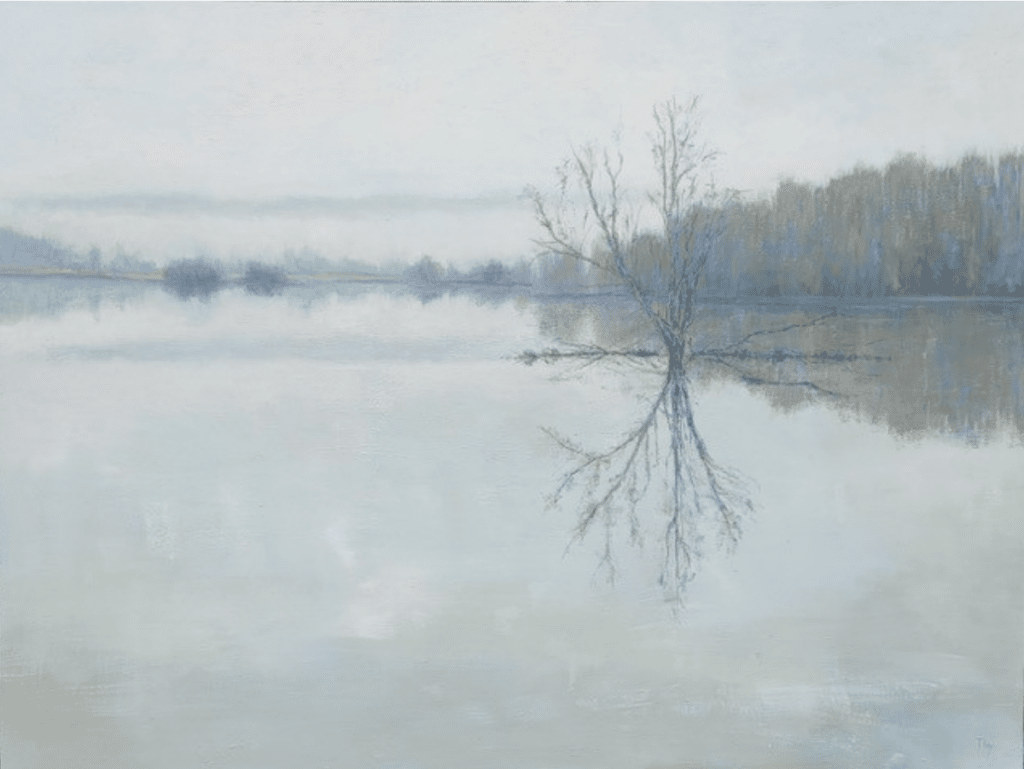
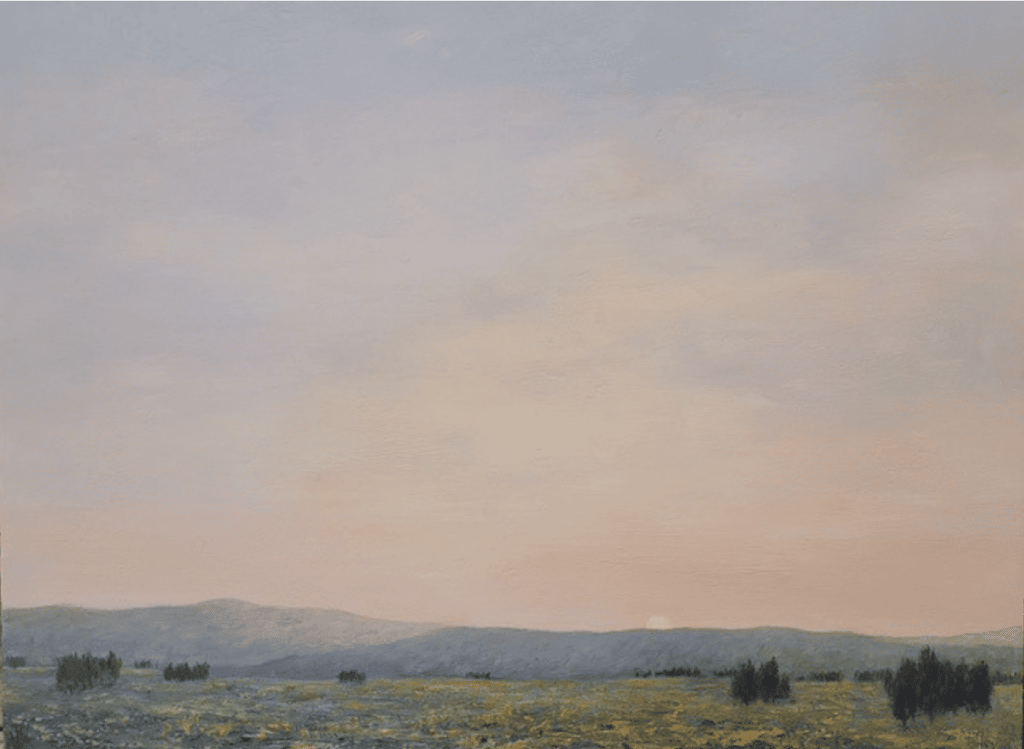
Two of the Tonalist landscapes by Tabby Ivy in Between Artists.
Gradually common themes emerged, especially reflections on life’s journey, loss, memory, and silence. Falke observes, “Between Artists invites the viewer to experience what is close in life, to stop and not just look, but to see and find a quiet place within themselves for reflection.”
Ivy has enjoyed a successful career in black-and-white photography that clearly informs her superb tonalist paintings. Falke is the longtime collaborative partner with Spokane’s Square Top Theatre; in his writings, concepts of place and places themselves figure prominently for what they speak of history and the stories we keep.
“This is the first international collaborative project we have presented,” says Alyssa Cordova, the museum’s executive director. “While the pandemic posed many challenges, it has also opened new creative opportunities, including this unique visual conversation between two artists that began in a virtual space online, but is now shared with the public as a physical, immersive art installation— a refreshing departure in an increasingly digital planet.”
Ink is Art!
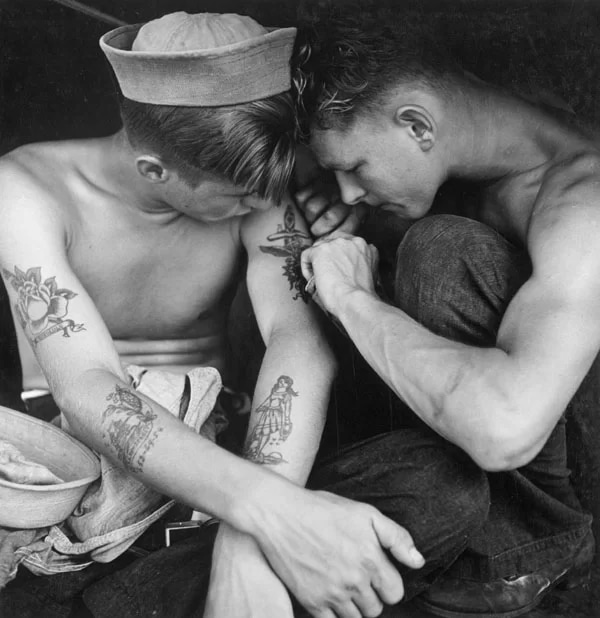
Tattooed sailors aboard the USS New Jersey, 1944, General Photographic File of the Department of United States Navy. National Archives and Records Administration.
Tattooing the human body goes back at least as far as 5,000 BCE, and probably much, much earlier, as we know from clay figurines with tattooed faces, unearthed during the excavation of ancient in tombs in Japan. It’s probably one of humanity’s oldest art forms, and with the unprecedented proliferation of tattoo photographs and imagery available online today, it’s one of the most popular too. There’s a lively history (with pictures of a 3,000 year-old tattooed mummy among other things) over at DailyArt for your reading and viewing pleasure.
-Chris


